| |
INTRODUCTION
|
| Surveillance, Espionage or spying involves individual obtaining the information is considered as secret or confidential without the permission of the holders information and Surveillancing in military ground of the Enemy activities. A robot is virtual or mechanical artificial agent. In practice, it is usually an electro mechanical system which, by its appearance or movements, conveys a sense that it has intent or agency of its own. Our aim in building this project is to create a wireless controlled Surveillance Robot vehicle which can be operated through a range of 500 meter. |
| This can also sense the obstacles, live pictures on its way to direction its path by using Infrared sensors and generate a report. We have used n-number of basic sensors and internal Ubuntu (Linux) operating system for internal processing, this can provide safe to robot if the communication fails from base station and it will take over control and collects the data autonomously and send back the collected data’s when reach its coverage area of the base station and also we are implementing the Self Destruction facility if the robot has been found out by the enemy or when trying to dismantling, it will automatically destroy itself and erase all the data’s which is being presented This unit is helpful and useful for surveillance of an area in defense grounds for enemy, spying purpose where the human reach is not recommended or avoided. |
Main Features.
|
| ïÃâ÷ Automatic GPS Navigation |
| ïÃâ÷ Automatic Self Destruction |
| ïÃâ÷ Implementing of IEEE 802.11 Wireless LAN |
| ïÃâ÷ Low power high performance System on Chip (SOS) |
| ïÃâ÷ Ultrasonic sensor senses up to 360’ distance. |
| ïÃâ÷ Rotatable camera for an extended view with 360’ rotation. |
Autonomous Robot Rules.
|
| ïÃâ÷ Gain information about the environment |
| ïÃâ÷ Work for an extended period without human intervention |
| ïÃâ÷ Move either all or part itself through its operating environment without human assistance |
| ïÃâ÷ Avoiding situations that are harmful to people, property, or itself unless those are part of its design specifications. |
II. METHODOLOGY
|
| A robot has to be constructed that had a high enough power to move all the robot hardware as well as the necessary surveillance equipment. It was believed the framework of robot would be relatively simplest one. The robot would operate wireless on battery power. For testing purpose the prototype would be able to run for at least one hour before needing to be charged. |
III. RELATED WORKS
|
| The purpose of this study is to develop a robotics system unit for surveillance scenario. This involves of research areas in robotics systems coordination approaches to environment exploration and target tracking. Surveillance systems provide the capability of collecting authenticate and purposeful information and forming appropriate decisions to enhance safety approach. Generally, the autonomous robots are robots that can perform with a high degree autonomy, which is particularly desirable in fields such as space exploration, cleaning floors, mowing lawns and water treatment. Some modern factory robots are autonomous within the strict confines of their direct environment. It may not be that every degree of freedom exists in their surrounding environment, but the factory robot’s workplace is challenging and can often contain chaotic, unpredicted variables. The exact orientation and position of the next object of work and even the type of object and the required task must be determined. This can be unpredictable. One important area of robotics research is to enable the robot to cope within its environment whether it is on land, underwater, in the air or in space. An autonomous robot may also learn or gain new knowledge like adjusting for new methods of accomplishing it task(s) or adapting to changing surroundings. Unfortunately, environments exploration requires resources from agents such as time and power. |
| There is a tradeoff between the amount of knowledge acquired and the cost to acquire it. The goal of an explorer is to get the maximum knowledge of the environment at minimum cost. This approach aims also to avoid typical subordination and hierarchical approaches present in other works. |
IV. PROBLEM AND THE PROBLEM SOLVING TECHNIQUES
|
A. EXISTING SYSTEM
|
| Important issues that arise from surveillance is security, exploration tasks, detecting and tracking capacity in a certain area. It is known that surveillance systems are designed over sensor device, and also they are assumed a Pre-selected environment and not a real environment. |
| In static environments, the robots cover more regions in the environment; they have a greater possibility to find the targets. In particular, if the robots able to achieve the full coverage, they can identify find all targets. |
| A good exploration can have two properties, namely completeness and effectiveness. Completeness requires that the robot covers most of the environment and effectiveness implies that the robot should achieve the completeness by minimal efforts. |
DRAWBACKS OF EXISTING SYSTEM:
|
| ïÃâ÷ A Special Algorithm is being used for surveillance. |
| ïÃâ÷ Does not use any wireless technology, GPS tracking device etc., |
| ïÃâ÷ Usage multiple robots in case if the signal is being disconnected the data’s which is being collected already is erased. |
| ïÃâ÷ Security is less |
B.PROPOSED SYSTEM:
|
| Exploration may be defined as the process of selecting and executing actions so that the maximal knowledge of the environment is acquired. The result is the acquisition of models of the physical environment. So, the exploration of unknown environments involves map-building but it is not confined to this process. Generally this kind of exploration can be considered as two ways. First, the agent or robot has to interpret the findings of its sensors so as to make accurate deductions about the state of its environment. The second is that the important aspect of exploration of unknown environments is that the agent or robot has to select its viewpoints so that the sensory measurements contain new and useful information. It involves guiding an agent in such a way that it covers of view-points during exploration. |
| In this research it is proposed to design of hybrid coordination mechanism based on the interaction of three rulers for intelligent agents: communication, intelligent task allocation and negotiation in a multi-agent robotic system. Several techniques have been proposed and it has been tested in real indoor and outdoor environments. |
| The proposed approach is generally divided into three distinct levels. |
| ïÃâ÷ Knowledge acquired level: It permits an agent to know about his teammates and the environment. To acquire the accurate information, hardware developments like sensors and communication systems are necessary. |
| ïÃâ÷ Task Allocation level: The main exploration goal of this research is to cover the environment in a minimum time and therefore it is essential the robots know which areas of the environment has already explored. |
| ïÃâ÷ Interaction level: A Grid map is being using for sensor readings and location of information. Hence the communication between the device needed to build the covered regions to know the teammates locations and to save in memory grid cells which is already being visited the regions. |
Advantages:
|
| ïÃâ÷ Autonomous robot control and surveillance system provides Automatic control for motors. |
| ïÃâ÷ Establishing automatic navigation control using GPS |
| ïÃâ÷ Internal device lock used for self destruction and security purpose. |
| ïÃâ÷ A neural schema is being presented; it will automatically generate the algorithm. |
| ïÃâ÷ Army border surveillance ground level and semi ground level. |
V. PERFORMANCE ANALYSIS
|
| The goal of the project is to provide security to the data to build a more efficient processing of information. |
MODULES:
|
| ïÃâ÷ MIC : Audio Acquisition |
| ïÃâ÷ Camera : Image Acquisition |
| ïÃâ÷ Ultrasonic : Distance Calculation |
| ïÃâ÷ Motor : Movement Control |
| ïÃâ÷ LDR : Luminance Control |
| ïÃâ÷ GPS Unit : Tracking area |
| ïÃâ÷ Self Destruction unit. |
| Ultrasonic (Distance Calculation): Ultrasonic sensors (also known as transceivers when they both send and receive, but more generally called transducers) work on a principle similar to radar or sonar which evaluates attributes of a target by interpreting the echoes from radio or sound waves respectively. Ultrasonic sensors generate high frequency sound waves and evaluate the echo which is received back by the sensor. Sensors calculate the time interval between sending the signal and receiving the echo to determine the distance of an object. |
| Motor (Movement Control): A DC motor is rated at the voltage it is most efficient at running. If we apply very few volts, it just won’t work. If we apply too much of power voltage, it will get overheat and the coils will melt. So the general rule is, applying as close to the rated voltage of the motor as we can. Here, a 9v Dc Supply is being used to Motor Controller (5mm Shaft) for movement process. |
| GPS Unit: Global Positioning System (GPS) has been introduced first time in Second World War, and nowadays it is used in call taxi to track the location of their employees. In this system the GPS is being used for receiving the signal and tracking the boundaries. |
| Neural Schema: An Intelligent device – independent robot manipulate control scheme must be developed for a manufacturing cell which works without use of human being. Neural Schema has to be adopted to control a robots point – to – point positing capability. Neural Schema allows a robot, to learn and store the knowledge and adjust itself to maintain its process capability, it is suitable for a variety tasks and working envelopes. |
| Self Destruction Unit: Self destruction facility of the robot is implemented. It has to be designed in such a way that it will blow and destroy itself and its data, if the robot gets locked by enemy or when try to dismantle it. |
VI.SYSTEM IMPLEMENTATION
|
CLSDS Algorithm:
|
| Based on this consideration, for Surveillance robotics systems we propose a closed loop surveillance algorithm is defined as a function of the knowledge acquired from the teammates. |
| Step-1 : Start the device self test. |
| Step-2 : Adjust the Camera, Ultrasonic, GPS, Bluetooth etc., |
| Step-3 : Get the commands from mission control |
| Software. |
| If communication fails |
| Go to SELF CONTROL |
| Step-4 : Else |
| Get commands and proceed with manual |
| control |
| Step-5 : Get the Latitude and Longitude from GPS |
| Step-6 : Get the range from setting database |
| Step-7 : Collect the Surveillance Data within a range |
| Step-8 : Back to destination and send back the |
| collected data to mission control. |
| Step-9 : Erase the temporary date stored in the |
| device. |
| Step-10 : Go to step 3 |
| Step-11 : End. |
VII. REQUIREMENT ANALYSIS
|
Hardware Requirements.
|
| PROCESSOR : ARM 11 1 Ghz |
| RAM : 512 MB |
| HDD : 2 GB |
| MONITOR : 15” TFT |
| KEYBOARD : Standard 102 Keys. |
Software Requirements.
|
| PLATFORM : UBUNTU (Linux) |
| FRONT END : C++, VB.Net |
| BACK END : MYSQL |
VIII. ROBOT VISION
|
| This security robot also needed an artificial intelligence that would allow it to recognize the world around it and be able to detect the intruders and alert the human operator. A neural network is a highly flexible data-processing structure made up of a number of nodes arranged in layers. The nodes of one layer may or may not trigger the nodes of the layer below it and so on. The relationship between each node is weighted and these weights can be adjusted automatically by training the neural network on a set of test data. The camera would take in a continuous stream of images of what is in front of the robot, and periodically (typically every 3 seconds). |
IX. CONCLUSION
|
| A surveillance planning, seen as an optimal search problem is presented in this paper. Although this is a specific instance of surveillance planning, finding a solution to it proves to be exponentially hard computationally. Great amount of application in security, surveillance and exploration tasks to be monitored and tracked by sensors. On the other hand the closed loop self destruction surveillance (CLSDS) algorithm that take into account the coverage gain and cost in time to reach a particular grid cell present a better performance. |
| Additionally, our future work consist of water resistant robots will be implemented as future enchantments. It works under water like submarine and detects the waterbed without a help of a human being. |
| |
Figures at a glance
|
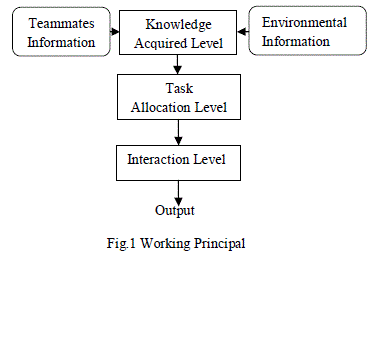 |
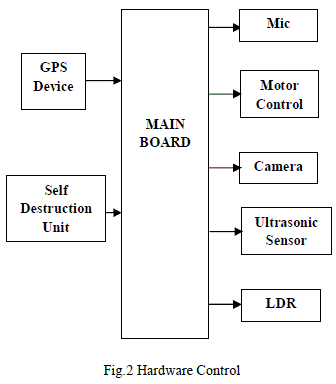 |
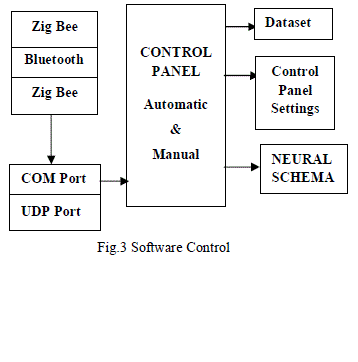 |
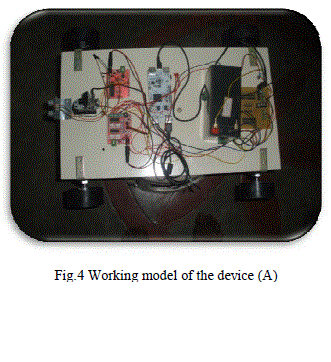 |
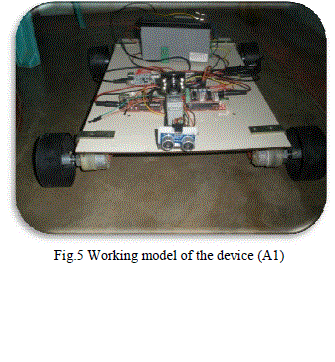 |
| Figure 1 |
Figure 2 |
Figure 3 |
Figure 4 |
Figure 5 |
|
| |
References
|
- J.-H. Zhou and H.-Y. Lin, "A Self-Localization and Path PlanningTechnique for Mobile Robot Navigation," Proceedings of the8th World Congress on Intelligent Control and Automation, pp. 694-699, Jun. 2011.
- B. Jung and G. Sukhtame, "Cooperative MultirobotTarget Tracking," The 8th International Symposium onDistributed Autonomous Robotic Systems, pp. 81-90, Jul. 2006.
- M. Khamis, A. M. Elmogy, and F. O. Karray,"Complex Task Allocation in Mobile Surveillance Systems,"Journal of Intelligent and Robotic Systems, vol. 64, no. 1, pp. 33-55,Jan. 2011.
- M. B. Dias, R. Zlot, N. Kalra, and A. Stentz, "Markey-BasedMultirobot Coordination: A Surveuy and Analysis," Apr. 2005.
- M. B. Dias, Thesis - TraderBots: A New Paradigm for Robustand Efficient Multirobot Coordination in Dynamic Environments.Pittsburgh, Pennsylvania: The Robotics Institute - Carnegie MellonUniversity, 2004.
- D. Guzzoni, A. Cheyer, L. Julia, and K.Konolige. Many robots make short work. AI Magazine, 18(1):55–64,(1997)
- "Mobilink Synchronization User's Guide", Sybase, Inc., 2004,pp. 37~68, pp. 392~402
- D. Fox, W. Burgard, H. Kruppa, and S. Thrun. Collaborativemulti-robot localization, in Proc. of the 23rd German Conference onArtificial Intelligence, Springer Verlag, (1999)
- "Fundamental of Neural Networks", Laurene Fauset., PearsonEducation 2003.
- ”Neural Networks and Fuzzy Systems” Bart Kosko, PHI LearingPrivate Limited.
|